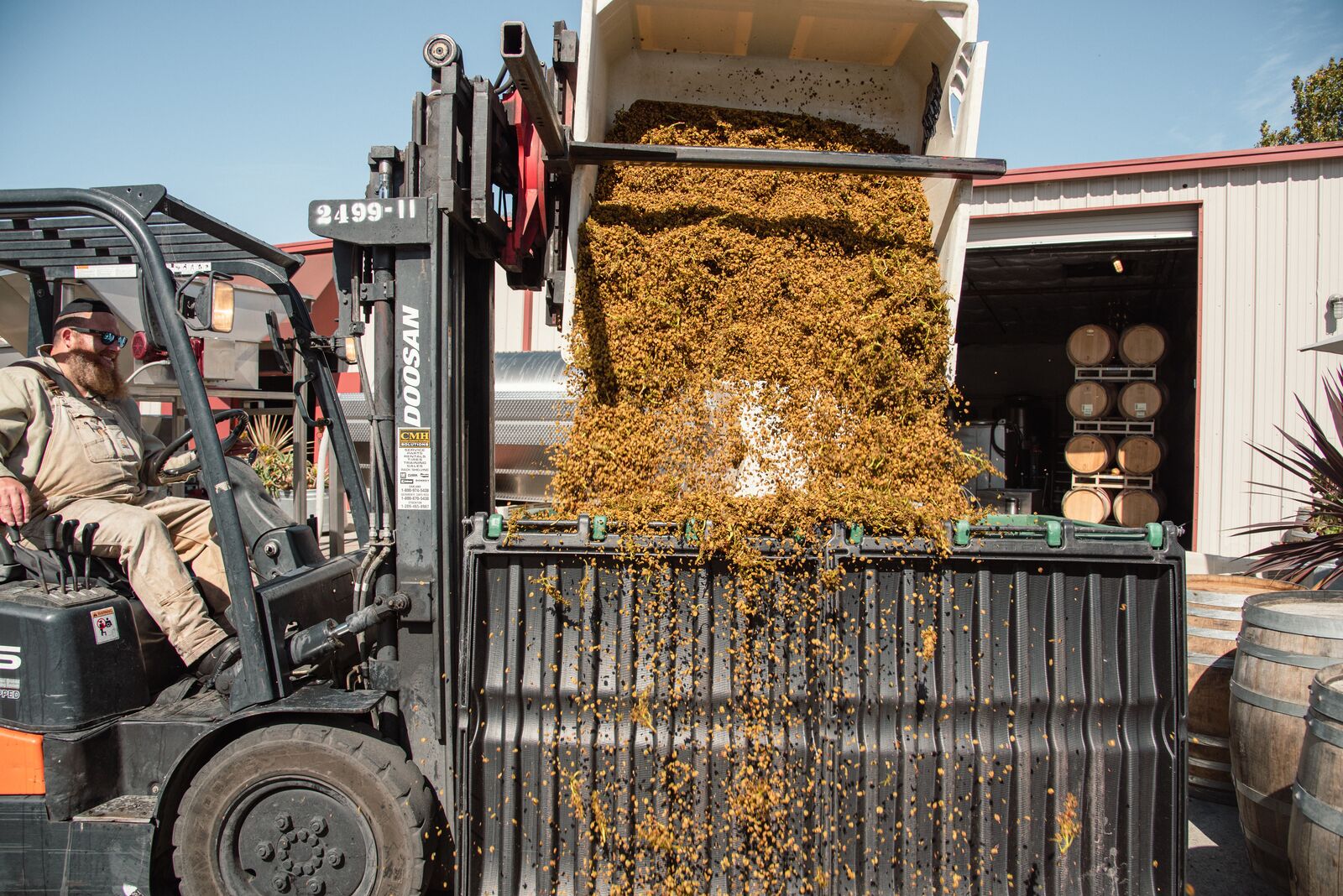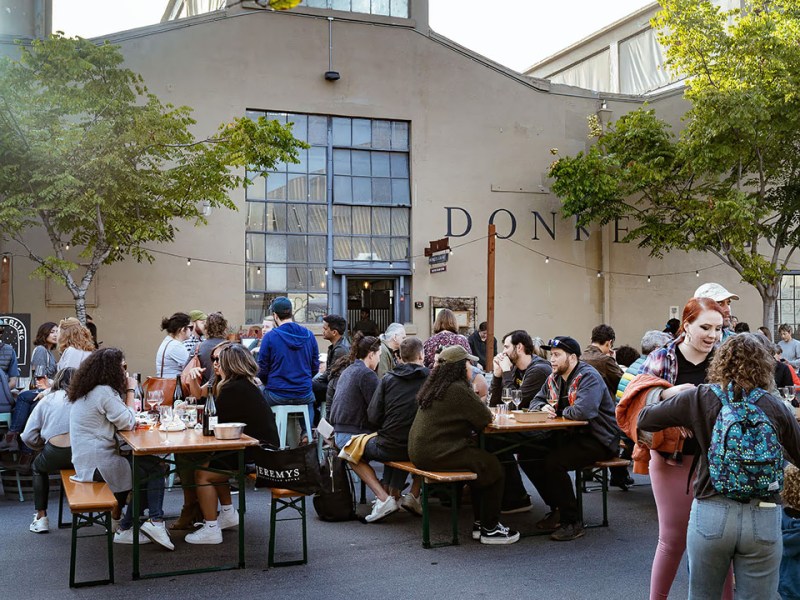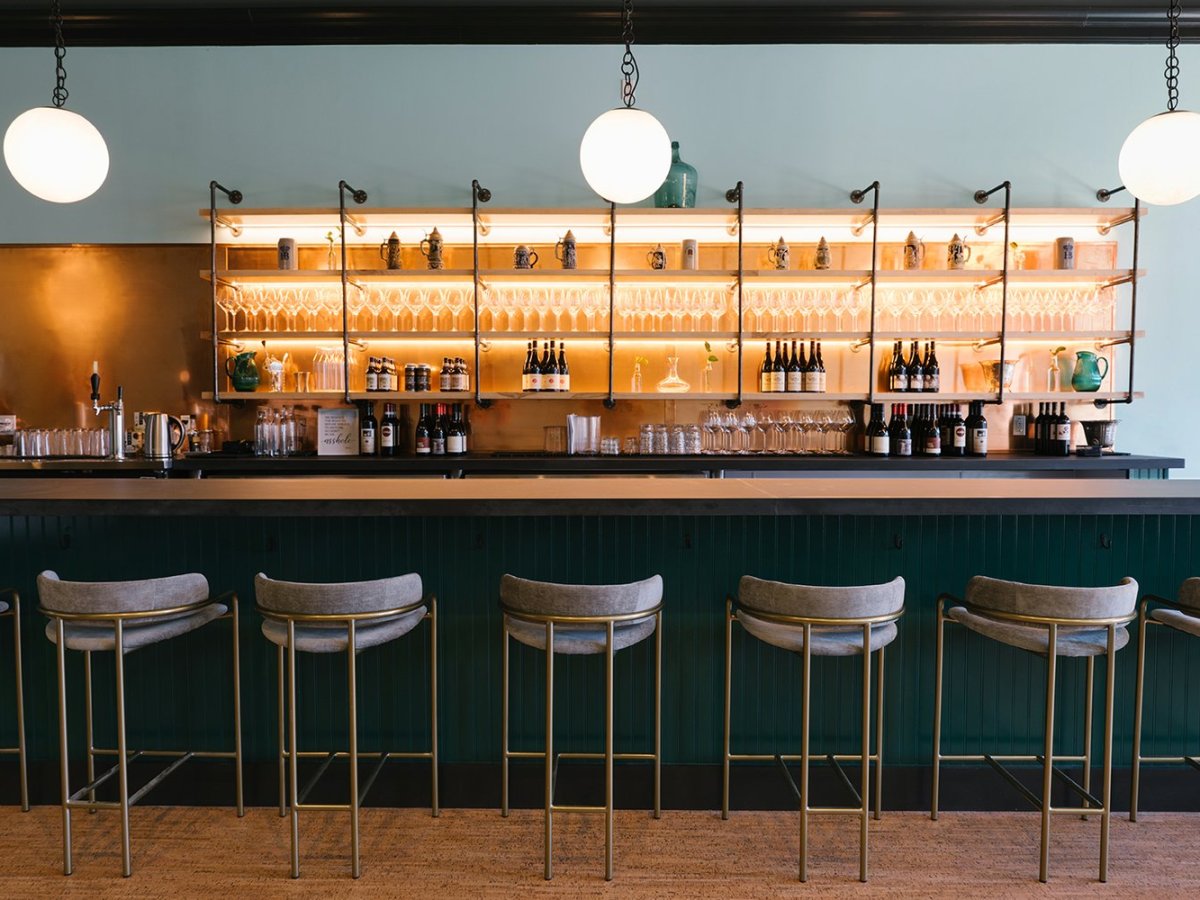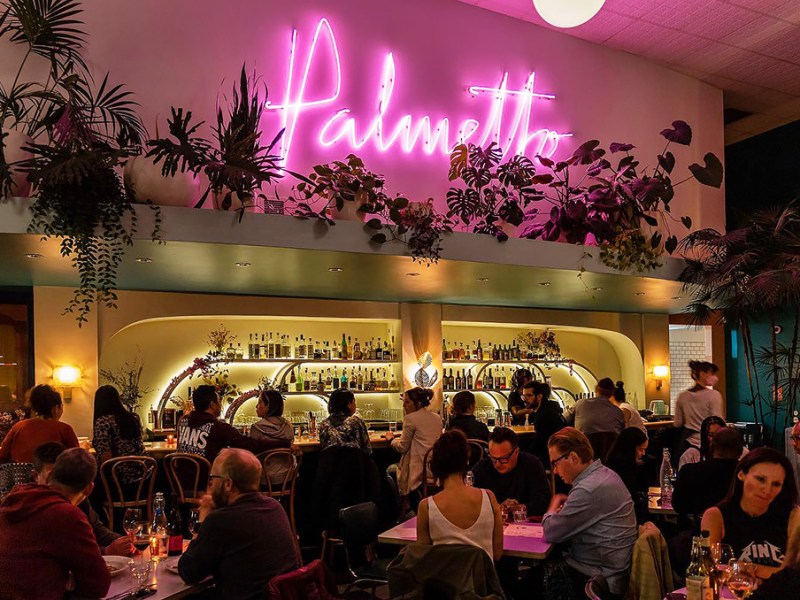A stroll through northwest Berkeley in the fall is accompanied by a seasonal selection of smells, sounds and sights.
Walk past one of the nine wineries clustered in this area and you may be hit with slightly sour, but alluring scents — the tangy, fruity, somewhat vinegary odor of fermentation in action. You also hear the beep, beep, beep of heavy machinery moving, as 1,000-pound bins of grapes are dumped into mechanical presses. There are early-morning deliveries of grapes by the ton, and more commotion and movement as the wineries take on interns and other seasonal workers to get through the most labor-intensive time of year.
Crush season at the West Berkeley wineries has come to a close. Starting late summer and going into mid-November this year, the harvest and grape-pressing period is when many of the key decisions are made that shape what ends up in the bottles. Many winemakers say it’s their favorite time of year — when they get their hands on the grapes and plot the strategy for each vintage. The style of fermentation, the type of tanks and barrels for storing the wine, and the mix of grapes going into blends are also decided in this critical period. While the majority have replaced old-fashioned foot-stomping with machines that do the crushing, the wineries still buzz with excitement and energy on grape-delivery days, with shouted questions and answers, workers moving in concert, and machines whirring and clanking, destemming clusters, crushing grapes and pumping the juice.
Photographer Ximena Natera (Berkeleyside/CatchLight), along with Nosh editor Tovin Lapan, visited three of West Berkeley’s wineries during crush season, Covenant Wines, Broc Cellars and Lusu Cellars, to capture the action.
Covenant Wines
A kosher winery that moved from Napa into a 9,000-square-foot facility in Berkeley in 2015, Covenant focuses on using grapes from sustainable and organic vineyards from Mendocino to Southern California. On the day Nosh visited Covenant, they had just received an early-morning shipment of Chardonnay grapes from Scopus Vineyard on Sonoma Mountain.
It’s a family affair, with co-founder Jeff Morgan working with his wife, Jodie Morgan, and daughter Zoe Morgan Koelewijn. The head winemaker is Jonathan Hajdu.
Jeff Morgan, who has spent time as a journalist, authored cookbooks and also moonlights as a jazz musician, was brimming with energy on the day the grapes arrived.
“Doing what you love is risky, but in the big picture it’s more risky not to do what you love,” Morgan said about pursuing his passions and starting his own business over choosing a more stable career path.







Lusu Cellars
Lusu Cellars, founded by David Teixeira in 2010, is one of the smaller wineries in West Berkeley.
Teixeira, who grew up in the Sacramento-San Joaquin Delta area in a Portuguese wine-making family, said his general philosophy is to apply Portuguese techniques to California grapes.
“If my grandfather didn’t put it in the wine, I don’t put it in the wine,” Teixeira said.
Lusu did not have as good of luck with the vineyards it works with in 2023 as some of the other Berkeley wineries.
“No fires was great, but we lost some vineyards to mold and the excessive winter rain,” he said. “A Lodi vineyard I sourced grapes from didn’t do well, we lost tonnage.”
On the day Nosh visited, Teixeira was working with Marzemino grapes, transferring the grapes from their bins into a mechanical press with a pitchfork because his forklift broke down a day before his grape delivery.
Even though his space on Camelia Street has grown cramped, Teixeira likes being in the West Berkeley winemaking community, where neighborhood residents often stop by the tasting room.
“I like it when the regulars come in and share the neighborhood gossip,” he said.









Broc Cellars
Founded by Chris Brockway in 2004, Broc Cellars is a natural winery using organically grown grapes. Broc Cellars recently acquired the 60-acre Fox Hill Vineyard in Mendocino, a vineyard from which Brockway previously sourced grapes. The vineyard cultivates 25 Italian varietals, two Portuguese and one type of Spanish grape.
On the day Nosh visited Broc Cellars, the crew was scooping grapes out of special cement tanks used for carbonic fermentation, in which most of the juice ferments while still inside an intact berry.
“It was a slightly bigger than usual harvest with no major weather events,” Brockway said. “The harvest has gone later than usual, but overall it was a really good, nice season.”
The long, wet winter and relatively cool summer meant the grapes took longer to mature this year.
“Nature is ultimately the head winemaker, we just help her along,” said Alison Sullivan, winery operations manager.













